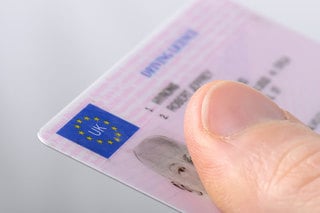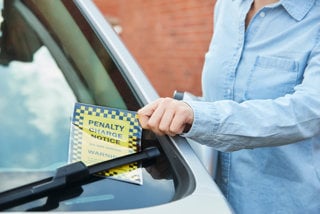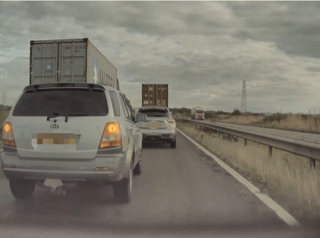The Government is raising the speed limit for lorries on single carriageway roads to 50mph.
Transport minister Claire Perry has announced the move as part of a package of measures aimed at cutting congestion and reducing dangerous overtaking.
HGVs over 7.5 tonnes currently have an upper limit of 40mph on single carriageway roads - a speed limit set in the 1960s and at odds with other large vehicles on our roads, says the Department for Transport (DfT).
The Government has also launched a six-week consultation on plans to increase the speed limits for HGVs on dual carriageways from 50mph to 60mph.
Perry said: "We're doing all we can to get Britain moving and boost growth. This change will do exactly that and save our haulage industry £11 million a year.
"Britain has one of the world's best road safety records and yet speed limits for lorries have been stuck in the 1960s. This change will remove a 20mph difference between lorry and car speed limits, cutting dangerous overtaking and bringing permitted lorry speeds into line with other large vehicles like coaches and caravans.
“Current speed limits for HGVs were introduced around 50 years ago and need to be updated given improved vehicle technology."
Geoff Dunning, from the Road Haulage Association, said: "This evidence-based decision by ministers, to increase the limit to 50mph will be strongly welcomed by hauliers and their drivers. The current limit is long out-of-date and the frustration it generates causes unnecessary road safety risks."
The change in speed limits for HGVs on single carriageways will come into force in early 2015 and will bring England and Wales in line with other European countries, such as Denmark and Norway.
Depending on the consultation responses, the increase for dual carriageways will come in at the same time. The existing limits continue to apply until the change has been put into effect.
The move was welcomed by the RAC and the Freight Transport Association (FTA).
RAC spokesman Pete Williams said: “While it may seem counterintuitive on the face of it to suggest higher speeds create safer roads, there is good evidence from trials in Europe to support the idea that raising speed limits on some roads has helped to reduce accident rates.
“A two-year trial in Denmark has seen speed limits on some rural roads increased from 80km/h (50mph) to 90km/h (56mph). Results there showed that some slower drivers raised their speed slightly, while faster drivers slowed down.
“Although average speeds on the roads remained almost the same, the smaller difference between faster and slower traffic resulted in fewer collisions and fewer deaths, according to police findings.
“They said the move has helped reduce frustration among faster drivers, and stopped them from performing dangerous overtaking manoeuvres.
“The Danish study may well prove to be ground-breaking in years to come but what's needed now are more studies to establish whether this reduction occurs in all instances.”
Malcolm Bingham, FTA’s head of road network management policy, added: “The FTA strongly supports this decision as we believe there is evidence confirming that road safety will be improved if the differential between HGVs and other road users is reduced.
“Many motorists do not understand that the limit for lorries is only 40mph and this can lead to frustration and on occasion risky overtaking.”
However, Brake, the road safety charity, has expressed serious concerns about plans.
Julie Townsend, deputy chief executive for Brake, the road safety charity, said: "We are disappointed and concerned by this announcement. Put simply, when vehicles travel faster, it takes them longer to stop, increasing risk.
“It is very well evidenced that increases in speed equal increases in crashes and casualties. At the same time, the road safety justification for this move is dubious: we are not aware of evidence it will help tackle risky overtaking, which should be addressed through other means.
“Pronounced speed differences between traffic can pose a risk, but the way to address this is by preventing car drivers going too fast, not speeding trucks up. The minister says she wants to get the country moving, but we ask at what cost to road users and the environment?
"Our own survey has just revealed the worrying extent of dangerous fast driving on country roads. We should be taking steps to address this, through driver education, lower speed limits and better enforcement.
“We are concerned for rural communities already blighted by fast traffic and for those who want to safely enjoy the countryside on foot, bike or horseback. This threatens to make these problems worse."
The DfT is also urging English councils to use local powers issued last year to restrict traffic to 30, 40 or 50mph where necessary because of pedestrian and cyclist use of roads, where the road is located and the layout.
The Department has also announced today the intention to carry out a major study about rural road safety in the near future.
Other measures the Government has introduced to boost the haulage industry include the HGV road user levy, which ensures foreign hauliers operating in the UK pay towards the upkeep of UK roads.
The Government has also ensured duty on standard diesel is lower than it was in October 2010 and has made no increase to HGV duty.
The Government is also investing £3.3 billion in major road schemes which will provide over 500 miles of additional lane capacity to the strategic road network and £10.7 billion to add at least 400 miles of capacity on the busiest motorways.






















David - 25/07/2014 11:08
As HGV's are governed to 56mph it's no good increasing speed limits on dual carriageways to 60mph. It would make more sence to have the speed limit for all trucks on all roads at 56mph then there would be less congestion and less requirement for cars to overtake. Then local lower limits can be set for all vehicles as required. It's again clear that the transport department are out of touch with things if they are not aware of the governed speed on all UK trucks!